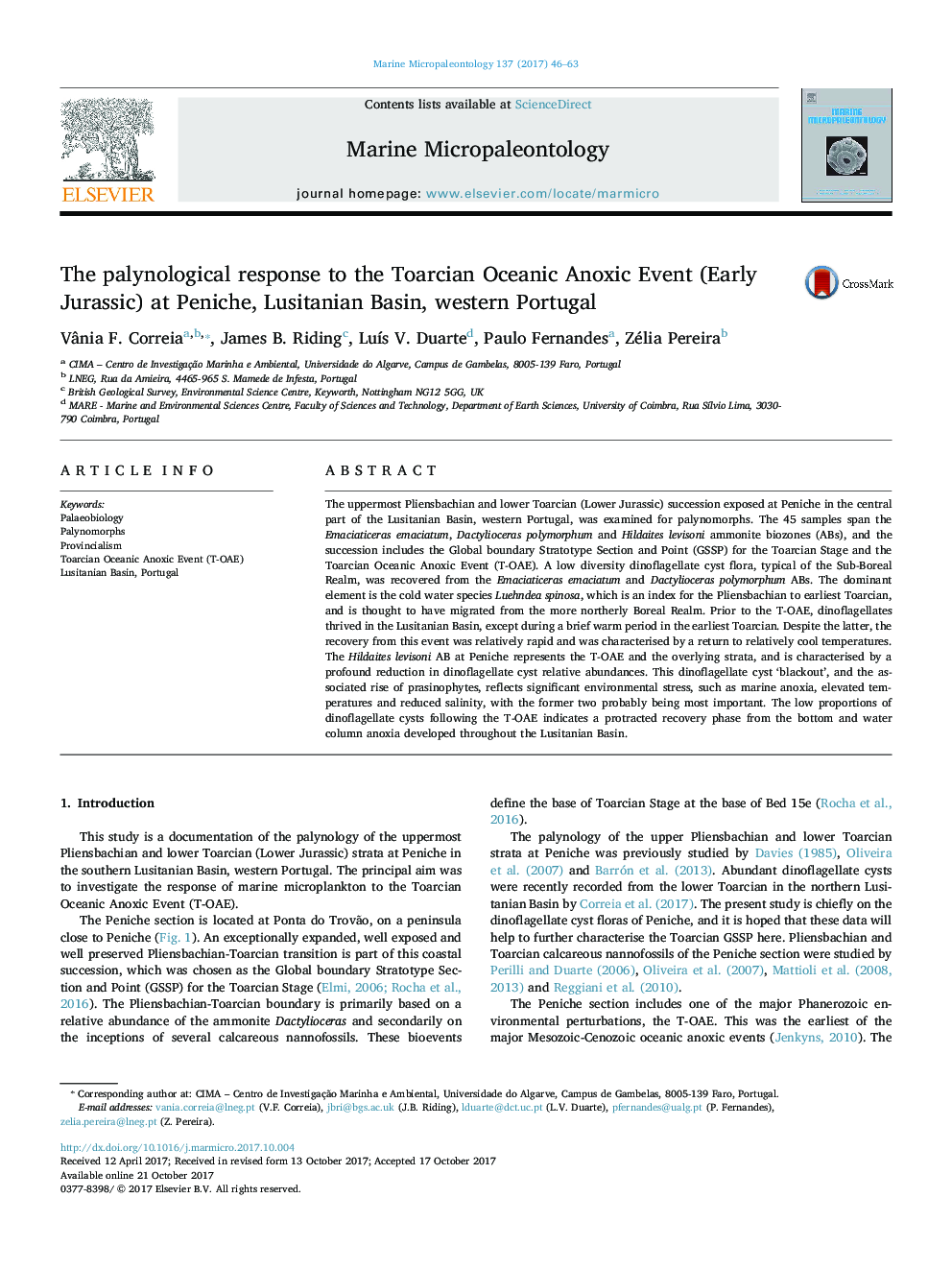| Article ID | Journal | Published Year | Pages | File Type |
|---|---|---|---|---|
| 8916531 | Marine Micropaleontology | 2017 | 18 Pages |
Abstract
The uppermost Pliensbachian and lower Toarcian (Lower Jurassic) succession exposed at Peniche in the central part of the Lusitanian Basin, western Portugal, was examined for palynomorphs. The 45 samples span the Emaciaticeras emaciatum, Dactylioceras polymorphum and Hildaites levisoni ammonite biozones (ABs), and the succession includes the Global boundary Stratotype Section and Point (GSSP) for the Toarcian Stage and the Toarcian Oceanic Anoxic Event (T-OAE). A low diversity dinoflagellate cyst flora, typical of the Sub-Boreal Realm, was recovered from the Emaciaticeras emaciatum and Dactylioceras polymorphum ABs. The dominant element is the cold water species Luehndea spinosa, which is an index for the Pliensbachian to earliest Toarcian, and is thought to have migrated from the more northerly Boreal Realm. Prior to the T-OAE, dinoflagellates thrived in the Lusitanian Basin, except during a brief warm period in the earliest Toarcian. Despite the latter, the recovery from this event was relatively rapid and was characterised by a return to relatively cool temperatures. The Hildaites levisoni AB at Peniche represents the T-OAE and the overlying strata, and is characterised by a profound reduction in dinoflagellate cyst relative abundances. This dinoflagellate cyst 'blackout', and the associated rise of prasinophytes, reflects significant environmental stress, such as marine anoxia, elevated temperatures and reduced salinity, with the former two probably being most important. The low proportions of dinoflagellate cysts following the T-OAE indicates a protracted recovery phase from the bottom and water column anoxia developed throughout the Lusitanian Basin.
Related Topics
Physical Sciences and Engineering
Earth and Planetary Sciences
Palaeontology
Authors
Vânia F. Correia, James B. Riding, LuÃs V. Duarte, Paulo Fernandes, Zélia Pereira,
